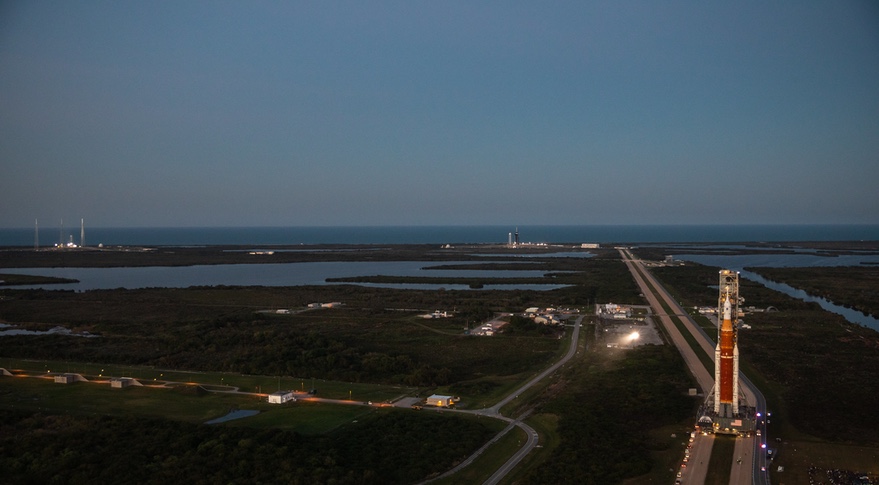WASHINGTON — Preparations for the first flight of the Space Launch System remain on track for a liftoff as soon as Aug. 29, NASA officials said Aug. 3.
SLS managers and agency leaders said the work to prepare the SLS and the Orion spacecraft for the Artemis 1 mission inside the Vehicle Assembly Building (VAB) at the Kennedy Space Center was “on plan” to support a rollout to the pad Aug. 18 and a launch 11 days later.
“We are in the final stretch,” Charlie Blackwell-Thompson, Artemis 1 launch director at KSC, said at a briefing to preview the mission. “We are targeting that rollout date of Aug. 18. We are on plan for that at this time.” A rollout that day would allow a launch on Aug. 29.
Since NASA announced the targeted launch date July 20, crews have been working on both SLS and Orion, ranging from completing repairs to the rocket to installing payloads inside the Orion capsule. Technicians also powered on Orion for the final time before launch last weekend.
One remaining item to complete is testing of the rocket’s flight termination system (FTS) in the “intertank” portion of the core stage. That testing will begin next week, she said.
The FTS could complicate launch planning for Artemis 1. At a July 20 briefing, NASA officials said the Eastern Range requires testing 15 days prior to launch. Doing so, said Cliff Lanham, senior vehicle operations manager for the Exploration Ground Systems program, creates “some challenges” to complete close-out work on schedule.
The testing also starts a 20-day clock to conduct the launch. “We do have issues with that timing,” he said then, to support backup launch opportunities on Sept. 2 and Sept. 5. NASA was working with the range to try and resolve those concerns.
At the Aug. 3 briefing, Blackwell-Thompson said those discussions with the range are ongoing. “We have provided all the performance data to the range,” she said. “The range has that data. They’re reviewing it currently.”
Current plans, she said, would allow two launches in that 20-day period. “We’ll be continuing to review that data with the range and, should additional days become available, we will factor that into our scrub planning.”
The briefing offered few other new details about the mission, instead providing the overview of the flight. The SLS will send the uncrewed Orion spacecraft to the moon, where the Orion service module’s main thruster will fire for a “powered fly-by” of the moon, placing it in a distant retrograde orbit around the moon. Orion will later exit the orbit and return to Earth, splashing down off the coast of San Diego Oct. 10, assuming a launch Aug. 29.
The mission will test both SLS and Orion before Artemis 2, the first mission to carry astronauts, scheduled for no earlier than 2024. “We have a ‘lean forward’ strategy on Artemis 1 because it is an uncrewed test flight,” said Mike Sarafin, Artemis 1 mission manager at NASA Headquarters. That means sending Orion to the moon even if there may be issues with the spacecraft in order to bring it back, testing the mission’s primary objective of demonstrating that Orion’s heat shield can work at lunar reentry velocities.
“We will be ‘go’ for failures on Artemis 1 that we would normally be ‘no go’ for on Artemis 2, on a crewed mission, in the interest of crew safety,” he said. “We’re trying to buy down risk for crewed flights, so we’re willing to take more risk on Artemis 1, on an uncrewed test flight, than we would on later crewed flights.”
“That’s why it’s a 42-day mission,” added NASA Administrator Bill Nelson, noting additional tests planned for the spacecraft. “Just remember, it’s a test flight.”
